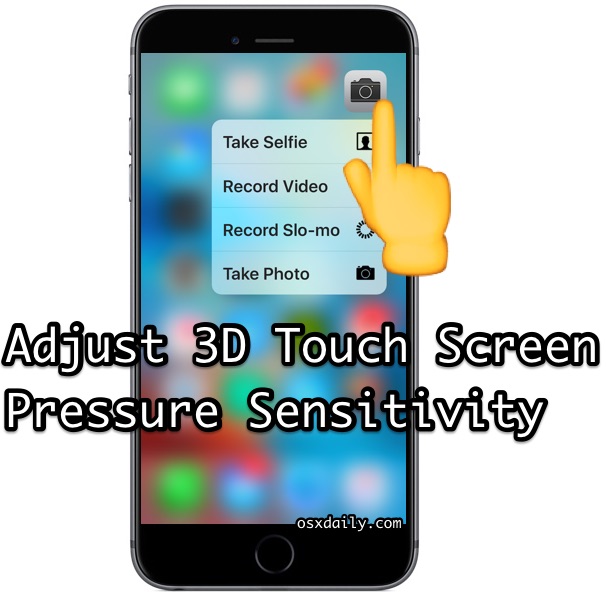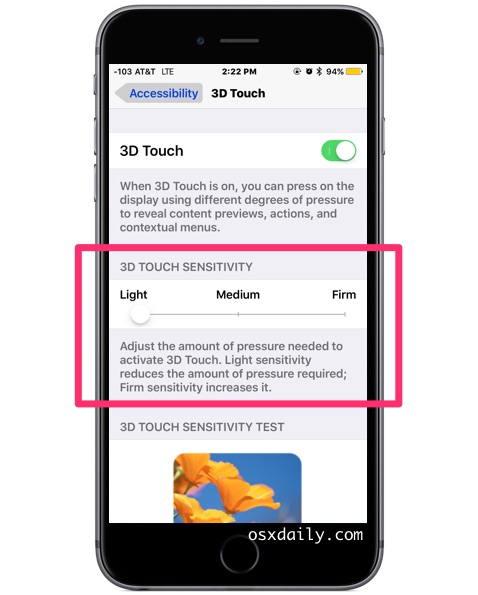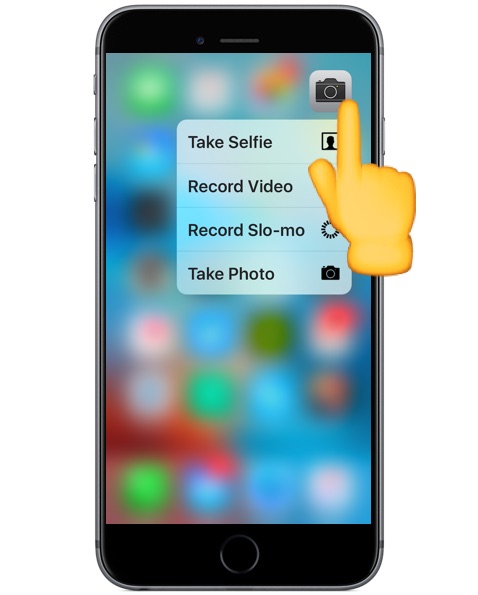How to Change 3D Touch Pressure Sensitivity on iPhone

The new iPhone 3D Touch display detects the level of pressure placed on the screen and, depending on the app, action, or home screen icon, offers different responses and interactions. These “peak” and “pop” features are throughout iOS and offer shortcuts of sorts to perform various functions, and they’re really a great feature of the newest model iPhone lineup. Using 3D Touch takes a little bit of practice, particularly in regard to applying the correct amount of screen pressure to get the intended action, but one way to greatly improve the 3D Touch experience is to manually adjust the touch screen pressure sensitivity required to activate the various features.
iPhone users can easily change the amount of screen pressure required to activate 3D Touch, but because the setting is going to be unique to each person and how they use the feature, you’ll want to test out the various levels of pressure required with the handy adjustment ‘sensitivity test’ area to determine if the settings are appropriate for your needs.
How to Adjust 3D Touch Screen Pressure Sensitivity on iPhone
This obviously requires an iPhone with a 3D Touch display, whether that’s an iPhone 6s or iPhone 6s Plus, 7, or newer, other models will not have this setting available:
- Open the Settings app in iOS and go to “General” then to “Accessibility”
- Go to “3D Touch” and locate the “3D Touch Sensitivity” portion of the settings, the slider below this is what you’ll want to change to fit your preferences, pick one of the following:
- Light – a soft amount of screen pressure activates 3D Touch peak, and a slightly more firm amount of pressure activates 3D Touch pop
- Medium – the default level of pressure sensitivity for 3D Touch displays
- Firm – a notably harder amount of screen pressure is required to activate 3D Touch peak and pop
- Next scroll down to the “3D Touch Sensitivity Test” area and press at varying degrees on the image, the initial 3D Touch press will ‘peak’ on the image, and a harder press will ‘pop’ the image
- When satisfied, leave Settings as usual and try the effect elsewhere in iOS


If you find yourself activating 3D Touch when you don’t always want to, you’ll probably want to use the “Firm” option, whereas if you find the required pressure is too great, using the “Light” feature is ideal.
This is really largely a matter of personal preference, but it also depends on what you’re using to activate the touch screen, if you use a case on the iPhone, and your general usage patterns, and whether or not you use a finger, toe, stylus, or other pointing device.
My personal preference is for the “Light” setting but when demonstrating the feature to a friend they found it way too easy to activate, so they strongly preferred the Firm setting. Try it out yourself and see what works for you, you can always make another change again by returning to 3D Touch settings.


For those of us seniors(>70) encountering Apple world … after 30 years with Microsoft & windows … touch screen typing/interface is discouraging at best.
How about an ap offering more nuanced get acquaint training. The seeming inconsistent responce is maddening
Hey, thanks for this article. I prefer light too ;)
Have a nice time
Gianna
I have mine set to light and I prefer that. Had it on firm for a while but went to light and touch force is better now. Cool feature but sort of a gimmick.